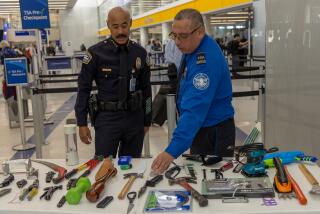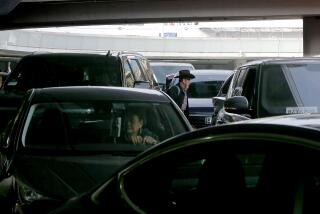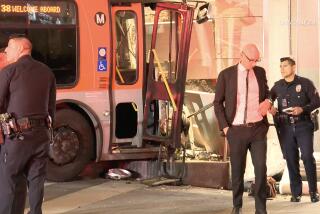First JFK, then LAX: How do you control chaos in a false alarm shooter situation?

Operations were returning to normal at Los Angeles International Airport on Monday morning, after false reports of an active shooter on Sunday sent passengers stampeding from terminals and, in some cases, onto the tarmac.
The chaos appears to have started Sunday evening when an actor wearing a mask and a black cloak and carrying a sword walked into the arrival level of Terminal 7 at Los Angeles International Airport.
Police detained the man at gunpoint, but released him after finding that the sword was plastic. By then, authorities had started to receive reports of gunfire at multiple terminals.
Hundreds of panicked passengers stampeded into the street and onto the tarmac. Flight operations on the south side of the airport came to a halt for half an hour. More than two dozen aircraft were diverted to other airports and 281 flights were delayed.
No active shooter was found. But the incident marked the second time in two weeks that a major international airport was paralyzed by false reports of gunfire.
Airport officials and security experts said the LAX incident and a shutdown at New York’s John F. Kennedy International Airport this month show how difficult it can be to control mass panic.
For all the investments in post-9/11 security improvements and training, the confusion and chaos stemming from a false report of violence can actually be harder to handle than dealing with a gunman, officials say. The hunt for a gunman takes much longer when there is no one to find.
“To keep people calm, you’d like to say that there’s nothing going on, but you don’t know that, and you can’t say that,” said Brian Jenkins, a security and terrorism expert at Rand Corp., the Santa Monica think tank. “People do unpredictable things in panic situations.”
Americans have become so aware of mass public shootings, particularly in airports, that in a moment of chaos, they are prepared to believe that they’re facing one, Jenkins said. An umbrella in a man’s hands can become a rifle; the bang of a suitcase hitting the ground, a gunshot.
“Plausibility is the enemy here. The perception is that it’s real. At that point, anything can reinforce that perception,” he added.
During the first crucial minutes after reports of an active shooter, police typically focus on moving crowds out of harm’s way and searching for the gunman. In an airport, that often leaves thousands of passengers stranded in an unfamiliar location, confused and afraid.
Sunday’s chaos marked the first time that LAX officials have tested recommendations made three years ago, after a gunman at Terminal 3 killed a Transportation Security Administration officer and wounded several others.
The response to the 2013 shooting was hampered by poor communication between law enforcement agencies and with the public, officials later found. Authorities proposed a host of changes to the airport’s policies and systems, including better radio equipment, double-checking emergency phones in terminals and creating special teams to help stranded passengers.
Mike Bonin, a Los Angeles City Councilman whose district includes LAX, said he will seek another report on how well the airport has made those changes, including whether vendors at restaurants and kiosks were included in the emergency response, and whether intercoms and digital signboards shared adequate updates with travelers.
The first reports of gunfire came at about 8:40 p.m. Sunday, from Terminal 8. Police dispatched officers to the scene and set up a command post that worked directly with the airport’s operations center, authorities said.
Sparked by panic and posts on social media, reports of gunfire began coming from as far away as Terminal 1.
Videos shared on Twitter and Facebook showed passengers hurrying along the sidewalks near the curbside drop-off area, pulling suitcases and holding on to children. When the crowd’s pace began to slow, one man screamed, “Come on, run!”
“It was a difficult and dynamic situation,” airport Police Chief Dave Maggard said. “We received dozens of calls, and the calls moved from terminal to terminal, which made it more challenging to determine what the threat was.”
Armed police checked every terminal, a process that took more than an hour, but found no evidence of a gunman.
In the weeks ahead, airport police and LAX officials will explore the causes of the panic and comprehensively assess the response, looking for ways to provide accurate information faster to the public and passengers.
“There’s always a need for improvement,” said Edward Bushman, the director of emergency management at LAX, adding that officials have worked “diligently” for the last three years to improve response times and communication. “All in all, I think we did a pretty good job.”
Douglas Lee, 41, was waiting to board a Southwest Airlines flight to Albuquerque when a crowd of people ran toward him, panic on their faces.
Lee heard a repeated “bam, bam, bam,” as suitcases fell to the floor. A girl of about 10 tripped and fell in the crowd, and adults swept along in the mob began to jump over her, sometimes kicking her in the back.
They moved with such intent, Lee said, that he was certain they were running from something — perhaps a bomb, or a chemical attack. His wife, thinking it was a gunman, placed herself in front of their 12-year-old son.
“People were terrified,” Lee said. His family rushed through a set of double-doors, down two flights of stairs, and onto the tarmac. Like many travelers, he opened Twitter and posted a photo, showing hundreds of people stranded on the tarmac.
Unconfirmed reports that spread on social media “can obviously contribute to alarm,” Jenkins said. “At the same time, it is the way the authorities can communicate back to the people.”
Workers were dispatched to provide information to passengers, authorities said. Messages went up on social media and on signs inside and outside the terminals, and officials pushed alerts to smartphones within a five-mile radius of the airport.
One message, sent just after 10 p.m., read, “No active shooter at LAX. Shelter-in-place. Repopulation to begin soon.”
Lee and his family had been back inside the airport for more than a half-hour when they received the message. Others pointed out that news outlets and L.A. officials had dispelled the rumor on social media by then.
Marshall McClain, director of the union that represents airport police officers, contends that more security cameras are needed in the gate areas and certain officers should not patrol any farther than 300 feet away from screening checkpoints. He added that people should also be stopped from fleeing onto the tarmac, near moving planes.
Some travelers who fled onto the ramp area, where aircraft are parked, were gathered up by police and operations staff and bused to the Tom Bradley International Terminal.
Caught up in the chaos was Kenny Stavert, 32, of Houston, who was waiting for his luggage outside Terminal 7 when the man wearing a black cloak and a broad-brimmed hat wandered past, giving out hugs and posing for selfies with passengers.
Moments later, a crowd of passengers barged through the doors from the curbside pickup area, some screaming, others dropping suitcases and purses as they ran. A few collapsed to the floor.
“Are those people falling because they tripped?” Stavert wondered. “Or is someone shooting at us?”
Stavert sprinted through a security door and back into the terminal, where he joined a terrified family inside a supply closet at a Dunkin’ Donuts. Minutes later, an airport official on a walkie-talkie urged them out of the closet and onto the floor in the main terminal, where they lay on their stomachs and waited.
Police officers with rifles drawn rushed past Stavert and toward the center of the terminal, shouting at passengers, “Don’t run! Get on the ground!” About 20 seconds later, Stavert said, the officers sprinted in the other direction.
“We didn’t know if they were running from something, or if they were chasing someone,” Stavert said. “It was a good five-10 minutes of, ‘Am I going to live?’”
Authorities suspect the panic might have been set off by the fast flow of information on social media, loud noises in one of the terminals, or by a possible misreading by the public of the police detention of the man carrying a plastic sword in Terminal 7, Maggard said.
“Officers found him and detained him with their firearms drawn,” Maggard said. “We don’t know if he was a piece that connected all the calls. We did handle him in close proximity to those calls. We are looking at everything. We are not ruling anything out right now.”
ALSO
County-USC patients’ personal information stolen in car break-in
Three sea otters that washed up on California’s Central Coast were fatally shot
More to Read
Start your day right
Sign up for Essential California for news, features and recommendations from the L.A. Times and beyond in your inbox six days a week.
You may occasionally receive promotional content from the Los Angeles Times.









